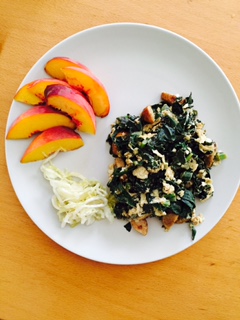Natural Moisturizers for Glowing Skin
/Summer and What TrueWellness Means
Every year on the summer solstice is my favorite festival: Sierra Nevada World Music Festival.
Four full days of camping, sunbathing by the river, dancing barefoot, connecting with my dearest friends, and losing myself to the heavy bass of live music: all important non-food related parts of #truewellness.
Enjoying, doing whatever you do to feel free, and connecting deeply with others - these are all examples of, in my opinion, what it means to be truly well and balanced. I give a lot of energy sharing and guiding on food, but relaxing, having fun, and social connection are not to be underestimated. So if you’re stressing or worrying about eating the “right” foods to feel your best, just know that sometimes it’s not always about the food.
Natural Moisturizers
I always come back from SNWMF sun-kissed and ready to wear summer clothes. Bare shoulders and legs means a little extra love for my skin.
Here are my favorite natural moisturizers to keep that golden summer glow:
Coconut Oil: By far my favorite! Most of you probably already have coconut oil in the kitchen, so put some in a jar to keep in the bathroom too. This oil can be used for almost anything - eating, cooking, for your hair, skin, or even for moisturizing your wooden cutting board. When buying coconut oil to eat or cook with, choose extra-virgin, as it is less refined. For use on your skin, you can save a few bucks by buying refined coconut oil and still get all the moisturizing benefits.
Almond Oil: if you don’t want to smell like coconuts, try almond oil. I like to place almond oil on skin that is still wet, as I find it helps spread and absorb easily. Both almond and coconut oil are great to bring poolside or to the beach as a natural tanning agent (of course if you have fair skin, apply after sunscreen!).
Rosehip Seed Oil: allow yourself some luxury with this beauty-enhancing oil! I love this for my face and use it as part of my bedtime routine. Rosehip seed oil has been used for centuries and is often used in many natural skin care products. It’s harvested from the seeds of rose bushes and full of antioxidants that can help with dark spots and fine lines. Cold-pressed organic rosehip oil would be best, but make the best choice for your budget.
There are tons of other natural oils out there, but these are just the ones in my bathroom right now. Which oils do you use?






















